How to save energy at home – 20 ways to reduce energy use and lower bills
Want to know how to save energy at home? Follow these strategies to use less electricity and gas and reduce bills
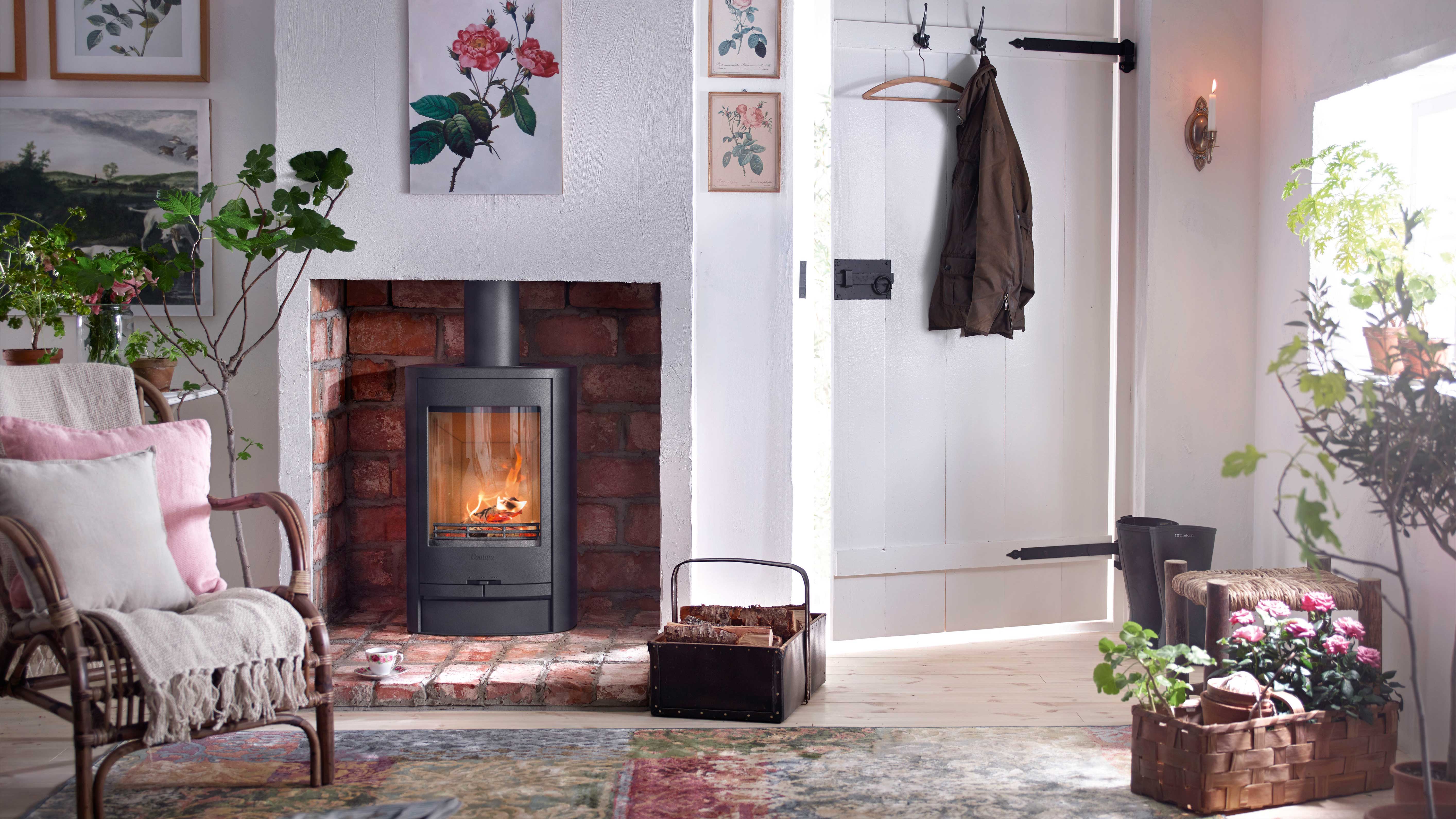
Knowing how to save energy at home is crucial. It can save you money because your energy bills will be lower, and you’ll be playing your part in reducing the use of fossil fuels and mitigating the effects of climate change.
Whatever the climate where you live, there are energy saving ideas you can implement that will mean you pay less for ways to heat your home – not to mention cooling it. We’ve put together a list of the top strategies you can use to do so.
We’ve also asked the experts to share their advice on energy conservation – and thus saving money – as well. So, whether you live in an older house or a newer one, discover the ways to save energy at home.
How to save energy at home
Whether your home is old or newer, there are plenty of ways to save energy. The rewards? Lower bills and a home that makes less impact on the planet.
1. Switch energy supplier
Some electric utility customers have the option to choose an alternate electricity supplier, according to the US Energy Information Administration. The way to find out if this is a possibility? Contact your distribution utility or the utility regulatory commission in your state.
In the UK, you could be overpaying for your energy if you haven’t switched suppliers recently – or ever. Sadly, loyalty doesn’t pay off when it comes to staying with the same provider for years. Use our energy comparison tool to find out if you could save.
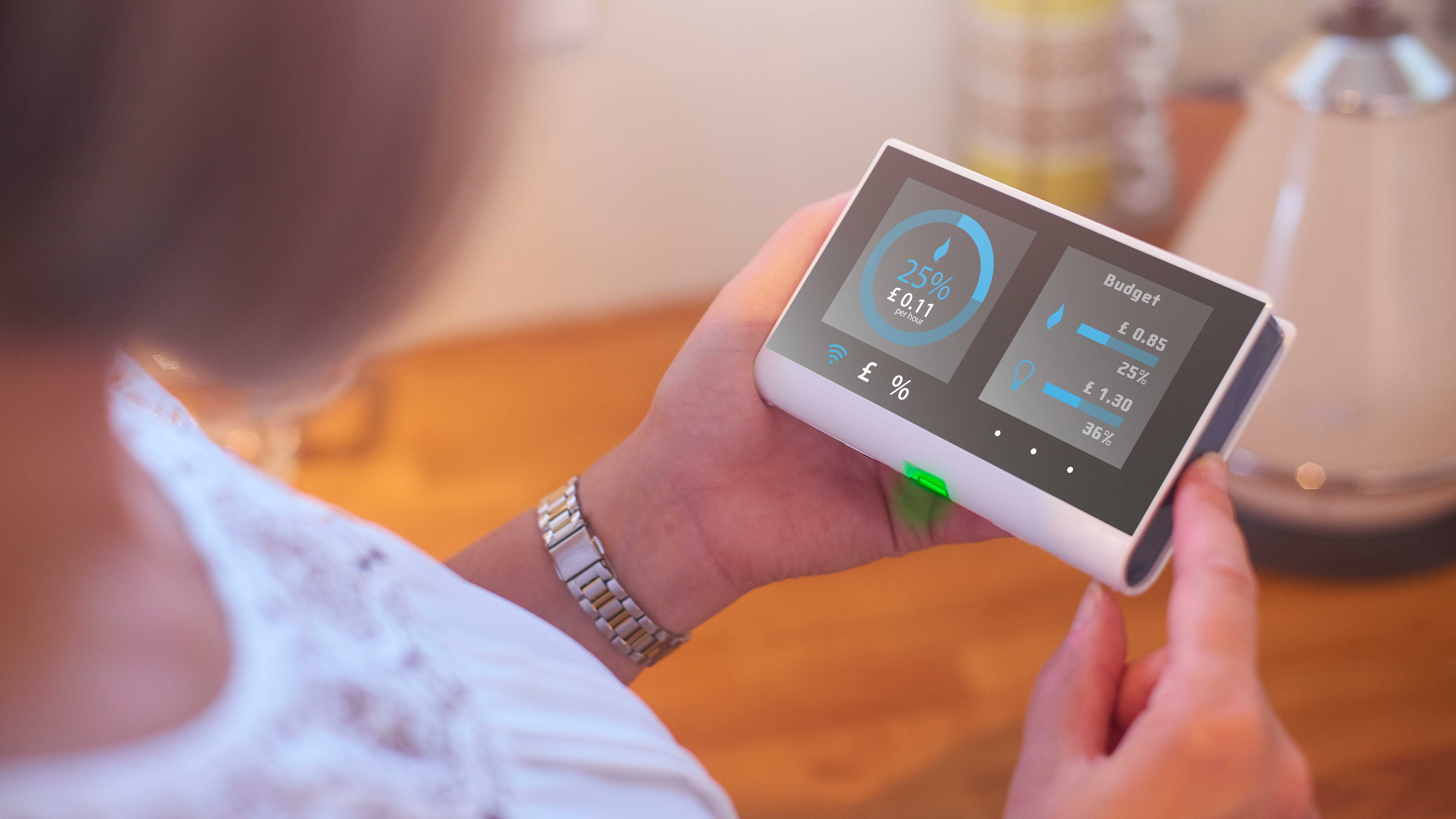
2. Conduct a home energy audit
You can call in a professional to find out how to save energy at home, but you could conduct your own home energy audit, which will provide useful information whatever type of home you live in.
Get small space home decor ideas, celeb inspiration, DIY tips and more, straight to your inbox!
Look for air leaks, check insulation, and inspect heating and cooling equipment, which should take place at least once a year or according to the manufacturer’s recommendation, says the US Department of Energy, which offers a guide to energy audits.
3. Fill gaps between floorboards
Filling gaps between floorboards is one of the top energy saving ideas for owners of older homes. Old floorboards add character to a room, yet it’s astounding how much heat can be lost through the gaps between them: added up together it can be the equivalent of a small window being permanently left open.
While simply laying down a large area rug in winter can provide extra insulation, learning how to fix drafty floorboards is a DIY skill worth having under your belt, and offers a better solution long term.

4. Swap to LED lighting
Energy for lighting accounts for around 10 per cent of your electric bill, according to the US Department of Energy, so an easy way to adopt better energy conservation measures and lower your spend is by updating light fittings and swapping to light-emitting diodes (LEDs), which can instantly reduce consumption of electricity.
While LED lamps can be expensive to buy, on average these last 25,000 hours, and savings in electric bills will usually offset the cost. Note, too, that the Department of Energy says that your electric utility may offer rebates for choosing these or other energy-efficient lamps.
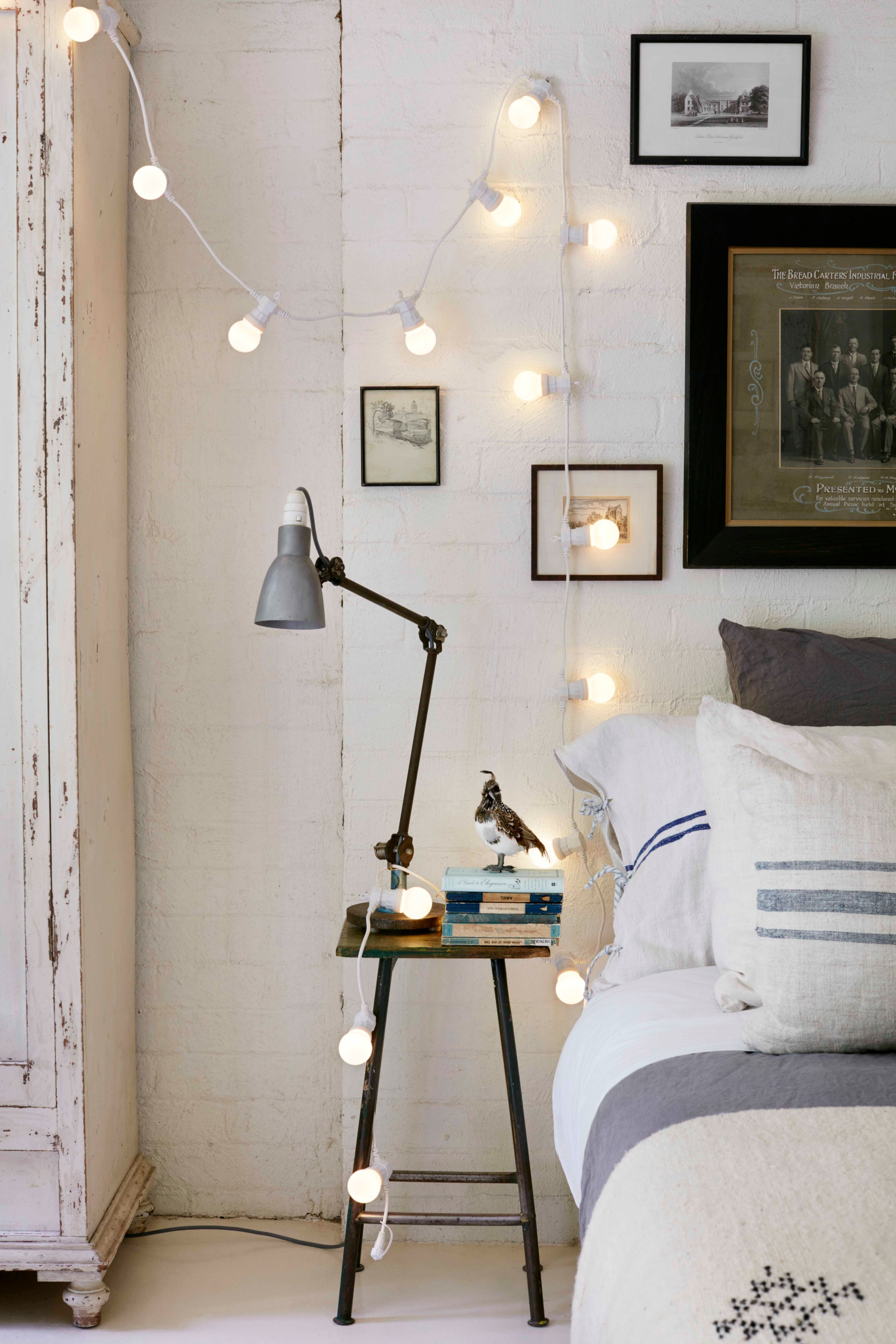
Find a wide selection of gorgeous, LED fairlights at Lights 4 Fun
5. Have more control with smart lighting
While investing in a smart lighting system means making a slight initial investment, you're sure to make a saving – both cost and energy wise – in the long term. Particularly if you’re switching over directly to more efficient bulbs or simply investing in smart plugs in order to control and monitor your plug-in appliances’ energy usage.
In addition to being one of our favorite energy saving ideas, we like smart lighting buys because they help users streamline their lighting system. That's thanks to the option to control all the lights in your home from your smartphone.
There are a whole host of smart lighting gadgets to pick from but the Philips Hue Starter Kit is a great place to get started.
6. Review your heating and cooling system
A yearly professional check and cleaning of heating and cooling equipment is important. It’s also vital to check the filters of a forced-air furnace and replace them as needed, the US Department of Energy says.
Unit more than 15 years old? Think about replacing it with a new one for better energy conservation.
In the UK, meanwhile, if your home heating system is powered by a boiler an annual service is important to ensure it is working as well as it should. But if it’s more than 10 years old you should consider replacing it with a highly efficient condensing model, which can save you up to £300 per year.
If your radiators aren’t working effectively, check to see if they are colder at the top than at the bottom, as this means there could be trapped air in the system. Learn how to bleed a radiator – it's a straightforward task that can be done on a DIY basis.
If, however, the top of the radiator is hot and the bottom cold, or generally they aren’t that warm, then there is probably sludge in the system that needs flushing out – a process that usually costs around £500.

7. Draft-proof doors and windows
When you’re focusing on how to save energy at home, you can make good wins with simple improvements, and one of these is fixing air leaks, including those from doors and windows.
Use caulking to seal leaks due to cracks and gaps where the components are stationery. Where they move, go for weatherstripping instead.
It’s also worth considering replacement of old drafty windows and doors for improved energy conservation. Look for those with Energy Star and NFRC labels.
‘Installing windows that are catered to your region’s climate and directly serve your home’s needs allows your thermostat to take a break and achieve your desired temperature without extra work,’ says Keith Gutterman, VP of marketing and business at Storm Tight Windows, part of Leaf Home Enhancements.
Sash windows can also be an issue due to the necessary gap around the sliding mechanism, but in the UK specialist companies such as Ventrolla and The Sash Window Workshop can add discreet draft-proofing. It’s possible to restore and maintain timber windows in old homes as well as maintain and repair metal framed windows.
In the UK, if yours is an old house it‘s important to retain its character when choosing windows for period homes.

8. Insulate the attic
Whichever type of climate you live in, insulating your attic is vital as part of a plan about how to save energy at home.
‘Save money by insulating your attic and roof, especially in preparation for the winter,’ says Zach Reece, owner and chief operating officer at Colony Roofers. ‘The laws of physics teach us that hot air rises, which means that if your attic isn’t insulated during the winter, all that warm air will escape through your roof. This is a big waste of energy and money that you can avoid if you insulate your attic and roof.’
In the UK, the most widely used material for loft insulation is mineral wool (around 27cm to 30cm deep) as, at around £20 per roll, it is very cost-effective. Although unpleasant to fit, requiring the use of protective clothing, mineral wool has good fire resistance and sound-insulation qualities.
Natural materials, such as sheep’s wool quilt or loose cellulose (made from recycled newspaper) are nicer to work with and well suited for use in older houses, but also consider a breathable spray foam insulation such as Icynene.
9. Add smart heating controls
Smart thermostats can help you save an unbelievable amount of energy – and money – on an annual basis, and it’s worth getting savvy about what a smart themostat is.
‘Smart thermostat technology allows homeowners to regulate temperature from a wi-fi enabled device to help control the amount of energy being used,’ explains Lee Crowder, national director of design at Taylor Morrison.
With the best smart thermostats capable of learning your heating and cooling behaviours – and consequently how best to streamline them – they’re perfect for reducing your energy bill. What’s more, you'll be able to see your saving thanks to monthly reports.

10. Fit storm windows
Not only can old window frames be the cause of drafts, but the glazing is often single pane. Replacing them with double pane versions can therefore be a great way to save energy. But, if you’re looking for a lower cost solution, consider storm windows.
If you take this route, make sure you opt for low-e storm windows. These have a low emissivity coating on the glass which reduces heat transmission. Fit these and savings of between 12 and 33 per cent on heating and cooling costs can be achieved, according to the US Department of Energy.
In the UK, you could look at fitting secondary glazing. High-quality aluminium systems can be colour-matched to the windows, while magnetic systems can be lifted out in the summer. Secondary glazing also cuts down on road noise, and the panels are usually very discreet and can be opened when needed.

11. Invest in a heat pump
Consider an energy efficient alternative to both furnaces and air conditioners – no matter what your climate – in the form of a heat pump. These collect heat from either the air, water, or the ground outside a home and concentrate it so it can be used inside.
The most commonly used type of heat pump is an air source heat pump, but there are also water source and geothermal options. If your home doesn’t have ducts, you can opt for a ductless version of an air source heat pump which is called a mini-split heat pump.
While renewables can give considerable savings on your bills, they can also have a negative impact on your home’s appearance, so make sure you have all the facts before investing.
In the UK, if you’re not able to generate your own renewable energy, it’s now quite easy to switch to one of the best green energy suppliers without needing to install anything in your own home.

12. Install an energy-efficient stove
Unlike open fires, which lose most of their heat straight up the chimney, wood-burning stoves are sealed to the room.
Choosing a wood burner idea over an open fireplace will result in you using less fuel and radiates the heat throughout the room efficiently. They're a perfect solution if you’re looking for ways to make an old home more energy efficient

13. Try a chimney balloon
An inflatable chimney ballon can be a great way to seal it when it’s not in use to stop warm air escaping. Don’t use the fireplace at all? You can plug and seal the chimney flue, according to the US Department of Energy.
In the UK try a device such as the Chimney Sheep to stop drafts. Made of a thick layer of felt, it can be inserted up the chimney when the fireplace isn’t in use and simply removed when you want to light a fire. If the fireplace is never used, you could opt for a chimney balloon instead.

14. Insulate the walls
When you’re thinking about how to save energy at home, investigate the potential of wall insulation.
In an uninsulated house, around a third of the heat will be escaping through the walls, so adding the right type of insulation can have a huge impact on the overall comfort of your home. If your property was built after around 1920, it’s likely that you’ll have cavity walls, which means you can have insulation injected into the empty space between the inner and outer brickwork. As this can usually be done externally, there’s minimal disruption to the property.
If you don’t have cavity walls, the other option is to fit solid wall insulation, which can be added to either the interior or exterior of your walls. Fitting it internally can be a good option if you’re also completing a large-scale renovation and remodel as there will be significant disruption, so it’s often best to complete it at the same time as other building work. You’ll also need to consider that you will lose floor space within a room once the additional insulation has been added to the interior walls. External insulation is a more expensive option and involves fixing insulation to the exterior walls and then typically covering it with a render or cladding material.
According to the National Insulation Association, adding cavity wall insulation to a semi-detached home will cost around £475. Depending on the size of the house, internal wall insulation will range from £4,000 to £13,000, and external wall insulation from £8,000 to £22,000.
What will you save? Adding cavity wall insulation to a semi-detached home can save you up to £155 per year, and solid wall insulation can save up to £260 per year, according to research from the National Insulation Association.

15. Then insulate the floors, too
You could make your rooms more comfortable as well as save energy with the right floor insulation.
How you approach the job will depend on whether it is a solid or suspended floor. A suspended wood floor needs both thermal insulation and draftproofing. A solid floor made from concrete might be improved with the help of insulating foam boards, or a floating wood floor or thermal underlay with a carpet.
For traditional solid floors, coir or other breathable floor coverings can help.

16. Reflect heat from radiators
Home with radiators? Fit enhancers behind them to reflect heat back into the room. In addition to preventing heat loss through the walls, this can save on energy bills and these are cheap to install.
You should make sure you keep them clean, too. ‘If your radiators aren’t in your weekly cleaning routine, then it's time to add them,’ says Jordan Chance, heating expert from PlumbNation. ‘A buildup of dust can affect your health, allergies and your heating bill. Layers of dust in your radiator can prevent heat from escaping effectively, meaning your radiators will have to work harder to warm your room.’

17. Get clever with curtains
Opting for curtains with a thermal or blackout lining can significantly reduce heat loss especially if you have single pane windows.
‘For best results, I suggest hanging the curtain rod at least 2 to 3 inches above the window frame and 2 to 3 inches to the outside of the window frame,’ says Angela Boswell, co-founder of The Drape. ‘This extends the barrier around the window to protect your interiors and energy bill.’
Curtains can help you saving on cooling, too. ‘Make sure to use reflective curtains on windows,’ says Khari Washington, broker and owner of 1st United Realty & Mortgage. ‘Your curtain backings should be white or metallic so that they reflect light outside of the home. By doing this, the house stays cooler and needs less air conditioning.’

18. Insulate floors over a garage
It’s a good idea to insulate floors above an unheated garage as part of your garage insulation strategy. ‘Installing continuous air and thermal barriers between an unconditioned garage and the conditioned spaces above can save energy and money, improve comfort, and safeguard indoor air quality,’ says the US Department of Energy.
Make sure you deal with any air leaks before you fit insulation, though.
19. Try small space heaters
Particularly in larger properties, heating the whole house when you’re using only one room – say a home office – for the majority of the day is not energy efficient.
To keep the room warm while you're working from home, consider getting a small space heater. A radiant heater can be the most efficient choice, although you’ll find most models work via convection.
Invest in a new model of small space heater to maximize safety, and always look for the Underwriter’s Laboratory (UL) label, cautions the US Department of Energy.
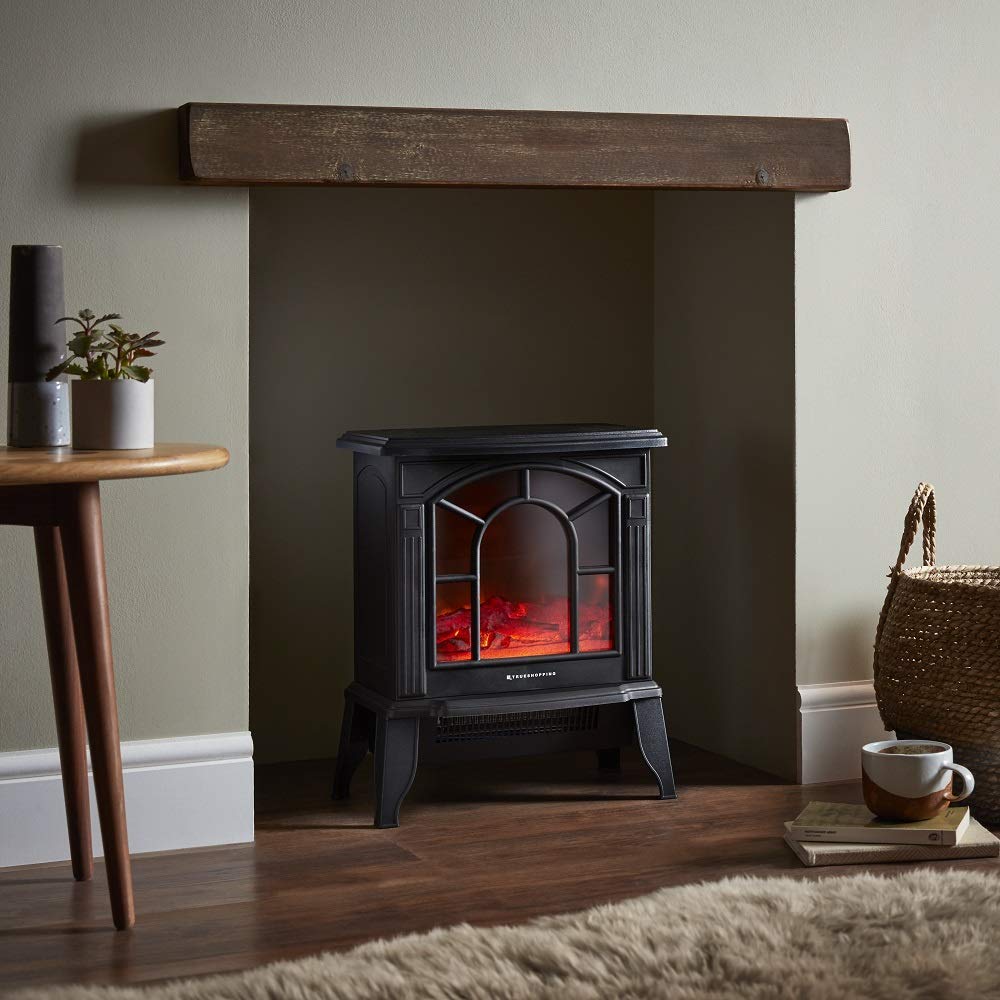
Freestanding Electric Wood Burning Flame Effect Fireplace by Trueshopping, Amazon
20. Go dark with exterior paint
Think about the paint colors or render you use for the exterior of your home to save energy.
‘For the exterior, dark colored paints are good if you live in a cool climate,’ says Phillip Ash, founder of Pro Paint Corner. ‘Dark paint will absorb heat and keep your home warmer. If you live in a warm climate, go for the light paint.’
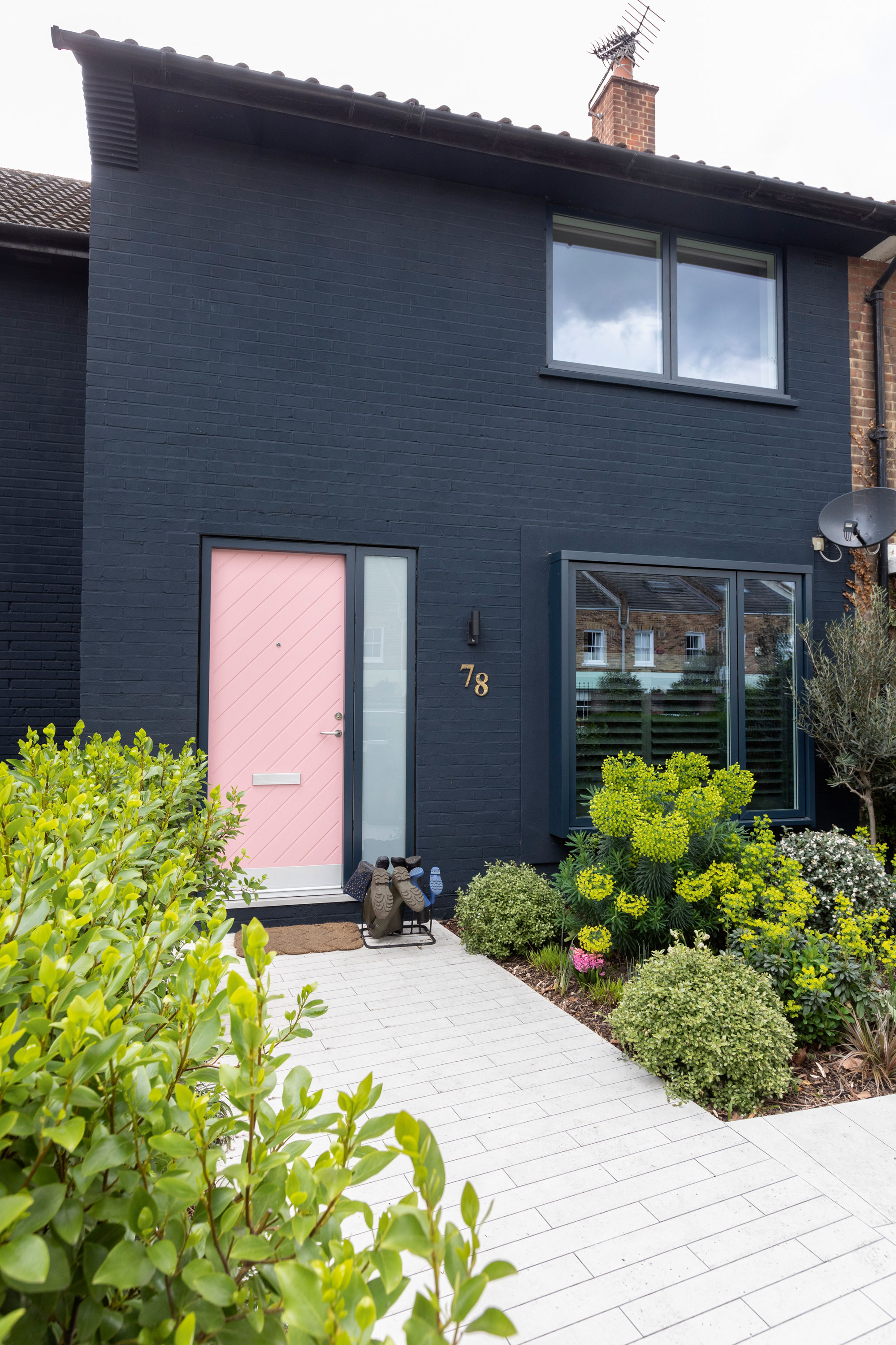
How can we save energy at home?
Pay attention to the elements of your home that use large amounts of energy.
‘Much of your home’s efficiency depends on maintaining airtight seals that keep your HVAC system from working too hard to heat or cool your home,’ says Ryan Shultz, vice president of products and solutions at Cinch Home Services.
‘Typical areas to watch for and prevent leakage include weatherstripping around windows and doors, HVAC ducts, attic doors, pipe penetrations in walls and outlet boxes on the exterior of your home.’
‘Insulate your water heater and hot water pipes, if it's not done already,’ says Jake Romano, manager at John The Plumber. ‘It’s cheap and fairly effective at reducing the energy requirements of temperature maintenance.
‘If it’s time to replace your water heater, consider on-demand hot water,’ he adds. ‘Traditional hot water tanks must heat water before it’s needed and store it so that it’s available when you turn the hot water faucets. On-demand hot water, or instant water heaters, differ from traditional hot water tanks in that they only heat the water as it’s needed. As a result, the heat energy that escapes the tank around the clock, even when you don’t need hot water, isn’t lost. These units use far less energy and they last much longer.’
‘Adding a storm door with a screen is a great investment to keep your energy consumption down,’ say the experts at ScreenMobile. ‘The storm doors keep out the elements without taking away from the curb appeal of your home.’
How can I reduce my electric bill?
To reduce your electric bill, address daily routines.
‘You need to get into the habit of turning lights off as and when you leave the room,’ says John Gresham of Build Fanatic. ‘Do this each time you leave the room, even if you intend on coming back within the next five minutes. This will reinforce the new habit and you’ll be far less likely to leave lights on in an unused room.
‘Also be conscious of heating and AC consumption, which are the number one and number two largest contributors to the energy bill. Wear extra layers in winter and consider using a fan rather than AC in the summer. And, as above, turn off these devices when you leave the room. The most significant waste of energy in the home is where you are air conditioning or heating a room no one is even in.’
‘Unplug unused gadgets,’ suggests Andrea Woroch, money-saving expert, writer and TV contributor. ‘As many consumers do, leaving electronics and appliances plugged in throughout the day is wasting energy and increasing your bill unnecessarily. These energy hogs continue drawing electricity even in the off mode which accounts for 10 per cent of your home utility bill, as reported by the Department of Energy.’
‘If you’re working from home, consider opening the blinds to reduce the amount of light you use,’ says Lee Crowder of Taylor Morrison.
‘With laundry, you can use a higher spin cycle for bulky items like towels so that they dry faster and need less time in the dryer,’ says Elyse Moody, home appliances and design expert at Designer Appliances. ‘Hanging items to dry also helps reduce energy use and extend the life of your clothes. Also consider running your washer at an off-peak hour when energy costs are lower; if your washer has a delay start setting, this is an ideal use for it.’

How can we reduce electricity use?
Make wise choices when you are investing in your home to reduce electricity use.
‘Whenever a bulb in your home goes out, get into the habit of replacing it with an LED bulb,’ says Ryan Shultz. ‘They may be a little more expensive up front, but they pay for themselves many times over with their efficiency and longevity. These days, they’re available in just about any shape or size. To save even more energy, consider putting some of your lights on timers.’
‘Consider replacing large appliances such as your fridge/freezer and oven if they are more than five years old,’ says John Gresham. ‘Efficiency in these devices has improved massively over the last few years.’
‘Remodel your home in a way that allows a lot of healthy natural light,’ says Wayne Funk, home builder and owner of Bellago Homes. ‘It is a pretty simple concept: the more natural light you allow in your home, the less the lights need to be on which reduces your electricity bill. You can remodel or design your home with skylights, picture windows, bay windows and other home fixtures that allow a lot of natural light to brighten your room. Install window frames made from vinyl, resin or wood-clad composite. These window frames are better insulated and will help maintain the temperature in your home.’
‘Plant some trees – in the right spots,’ suggests Gian Moore, partner and editor at Mellowpine. ‘This will take some time to yield results, but thoughtfully positioned trees can lower your home’s energy needs by up to 25 per cent a year. (Not to mention their carbon-sinking superpowers!)
‘For example, planting deciduous shade trees on the south and west sides of your home can shade your windows and walls from the hot summer sun and lower the air temperature around your home, easing the load on your air conditioner. And once their leaves fall, warming winter sunlight can still get through, but dense evergreen trees or shrubs planted on the north side of your lot can block biting winter winds and reduce heating costs.’
In an uninsulated house, around a third of the heat will be escaping through the walls, so adding the right type of insulation can have a huge impact on the overall comfort of your home. If your property was built after around 1920, it’s likely that you’ll have cavity walls, which means you can have insulation injected into the empty space between the inner and outer brickwork. As this can usually be done externally, there’s minimal disruption to the property.
If you don’t have cavity walls, the other option is to fit solid wall insulation, which can be added to either the interior or exterior of your walls. Fitting it internally can be a good option if you’re also completing a large-scale renovation and remodel as there will be significant disruption, so it’s often best to complete it at the same time as other building work. You’ll also need to consider that you will lose floor space within a room once the additional insulation has been added to the interior walls. External insulation is a more expensive option and involves fixing insulation to the exterior walls and then typically covering it with a render or cladding material.
According to the National Insulation Association, adding cavity wall insulation to a semi-detached home will cost around £475. Depending on the size of the house, internal wall insulation will range from £4,000 to £13,000, and external wall insulation from £8,000 to £22,000.
What will you save? Adding cavity wall insulation to a semi-detached home can save you up to £155 per year, and solid wall insulation can save up to £260 per year, according to research from the National Insulation Association.


